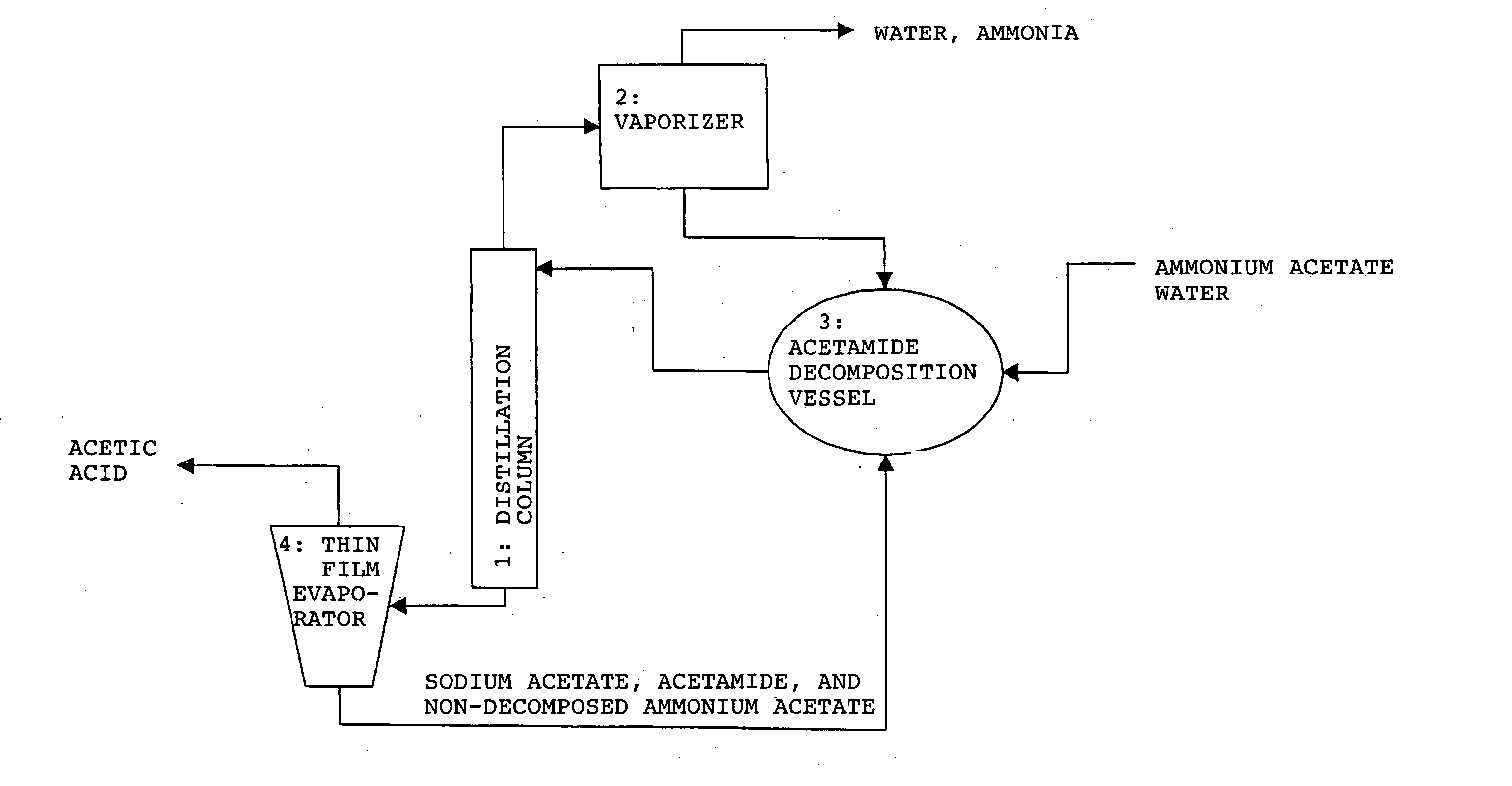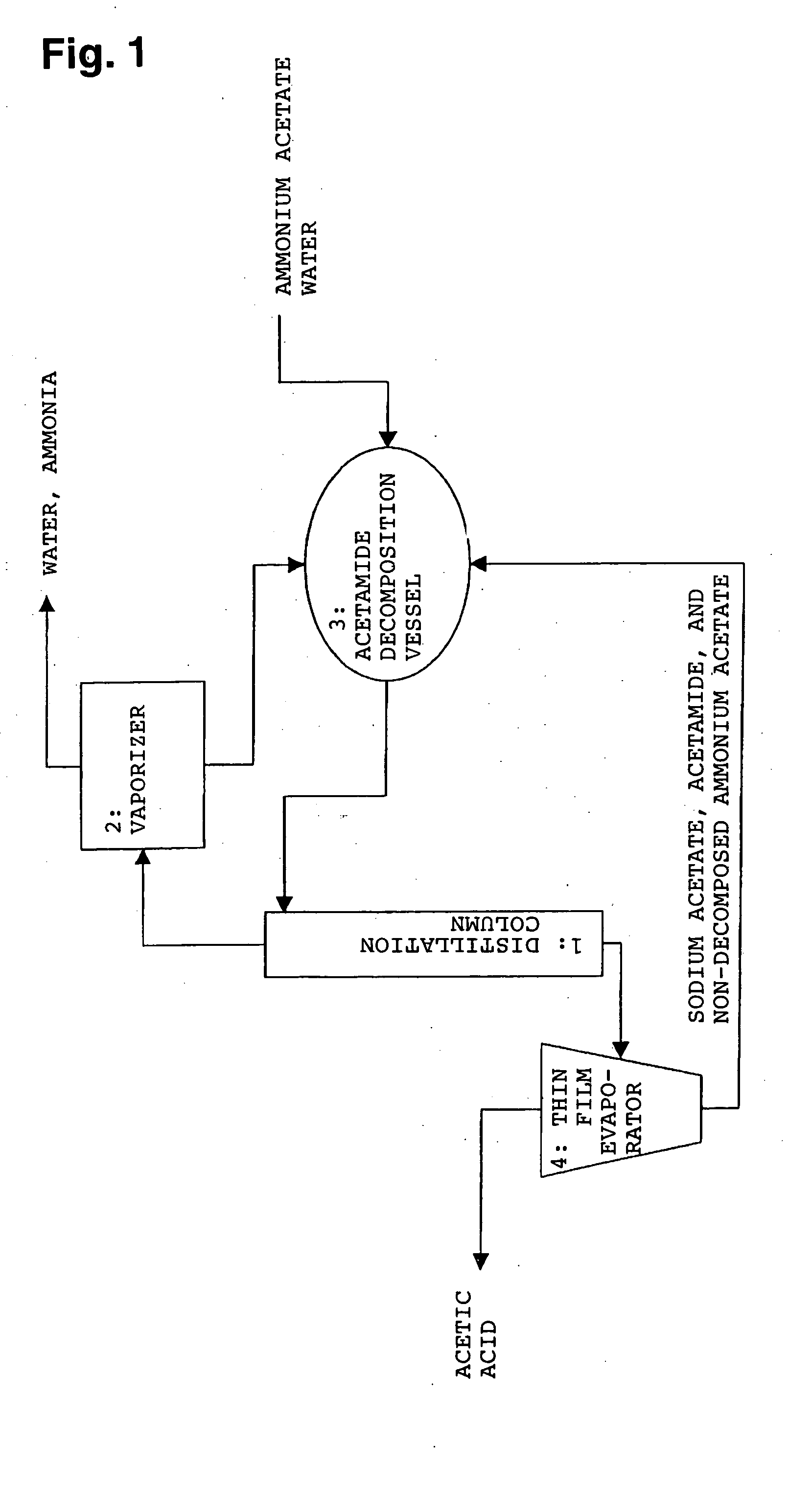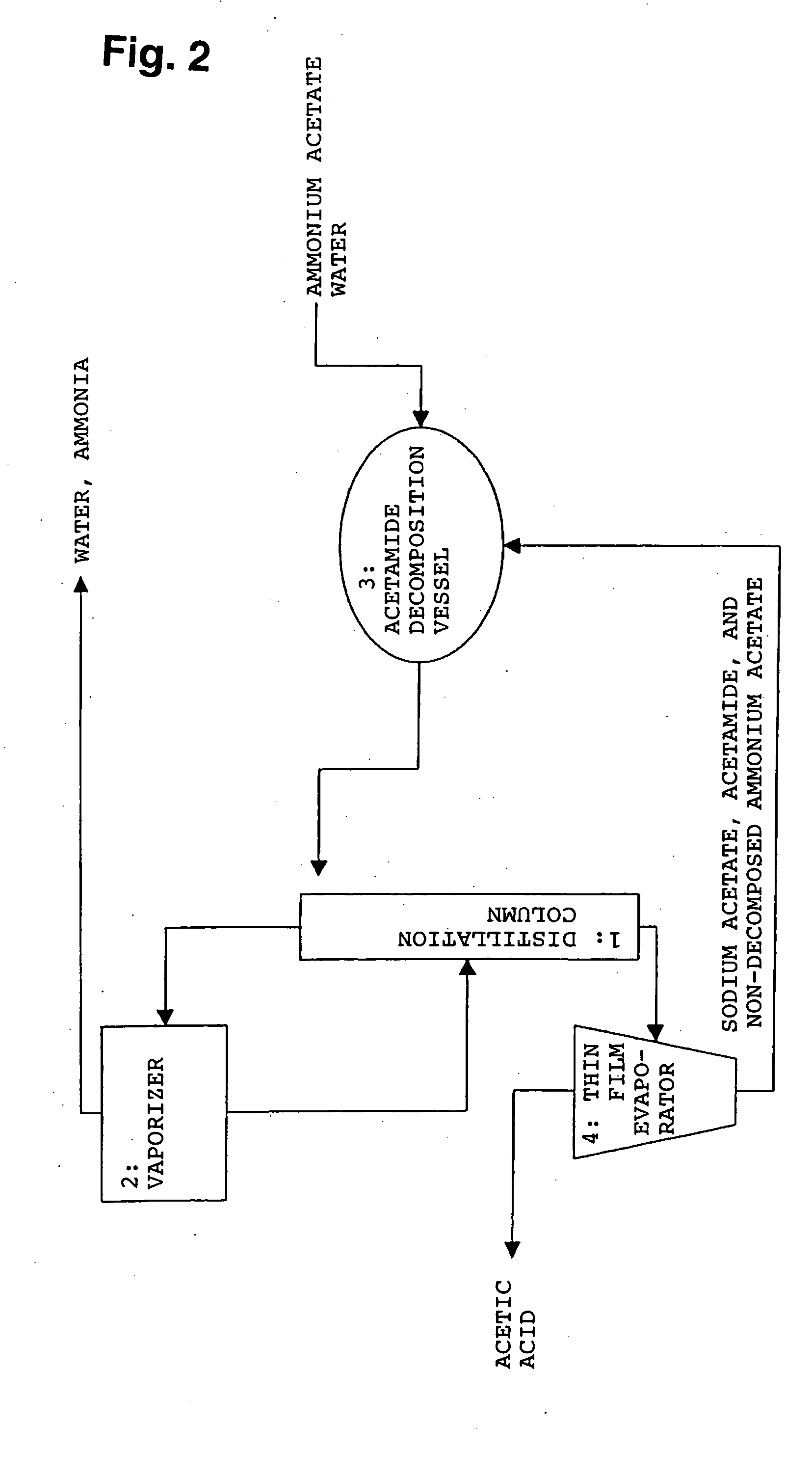Method for producing organic acid
- Summary
- Abstract
- Description
- Claims
- Application Information
AI Technical Summary
Benefits of technology
Problems solved by technology
Method used
Image
Examples
example 1-1
180 g of diammonium succinate (succinic acid: 78 wt %, ammonia: 22 wt %) was dissolved in 720 g of water to prepare 900 g of a 20 wt % ammonium succinate solution.
This aqueous solution was evaporated and concentrated in an oil bath of 140° C. (the interior of the evaporator: 100° C.) to a level of 256.5 g. 249 g was taken therefrom, and 173 g of acetic acid was added to succinic acid, followed by thorough stirring. The mixture (415.5 g charge) was put into a crystallization apparatus and maintained at 100° C. for 10 minutes, and then maintained at 40° C. for 18 hours with stirring.
Then, vacuum filtration was carried out, and then the solid content was taken out. The filtrate was 296.6 g, and the solid content was 93.4 g. The obtained solid content was analyzed for organic substances by liquid chromatography and for ammonia by ion chromatography, whereby acetic acid was 28.4 wt %, succinic acid was 58.3 wt %, and ammonia was 10.4 wt %. The total was not 100%, and this is believe...
example 1-2
Using a 100 ml reagent bottle, 15.2 g (0.1 mol) of diammonium succinate was mixed to 15.2 g (0.25 mol) of acetic acid and 6 g of water under heating and dissolved at 90° C. This solution was left for 12 hours in a water bath (40° C.). White solid thereby precipitated was collected by filtration. The recovered solid was 6.1 g, and as a result of the analysis, succinic acid was 69 wt %, and ammonia was 12.8 wt %.
3.1 g of this solid was again put into a 100 ml reagent bottle and mixed with 5.4 g of acetic acid under heating and dissolved at 75° C. This solution was left to stand for 8 hours in a water bath (400C). White solid precipitated, was collected by filtration. The recovered solid was 0.5 g, and as a result of the analysis, succinic acid was 97 wt %, and ammonia was 1.6 wt %.
example 1-3
Using a 100 ml reagent bottle, 15 g (0.1 mol) of diammonium succinate was mixed with 35 g (0.58 mol) of acetic acid and 10 g of water under heating and dissolved at 950C. This solution was left to stand for 12 hours in a water bath (40° C.). White solid precipitated, was collected by filtration. The recovered solid was 4.3 g. 4 g of this solid was again put into a 100 ml reagent bottle and added to 16 g of acetic acid under heating and dissolved at 70° C. This solution was left to stand at room temperature (about 15° C.) for 8 hours. White solid precipitated was collected by filtration. The recovered solid was 2.2 g, and as a result of the analysis, succinic acid was 90 wt %, and ammonia was 0.8 wt %.
From the foregoing results, it is evident that it was possible to recover succinic acid of high purity by reactive crystallization by means of acetic acid.
PUM
| Property | Measurement | Unit |
|---|---|---|
| Temperature | aaaaa | aaaaa |
| Pressure | aaaaa | aaaaa |
| Melting point | aaaaa | aaaaa |
Abstract
Description
Claims
Application Information
 Login to View More
Login to View More - R&D
- Intellectual Property
- Life Sciences
- Materials
- Tech Scout
- Unparalleled Data Quality
- Higher Quality Content
- 60% Fewer Hallucinations
Browse by: Latest US Patents, China's latest patents, Technical Efficacy Thesaurus, Application Domain, Technology Topic, Popular Technical Reports.
© 2025 PatSnap. All rights reserved.Legal|Privacy policy|Modern Slavery Act Transparency Statement|Sitemap|About US| Contact US: help@patsnap.com



